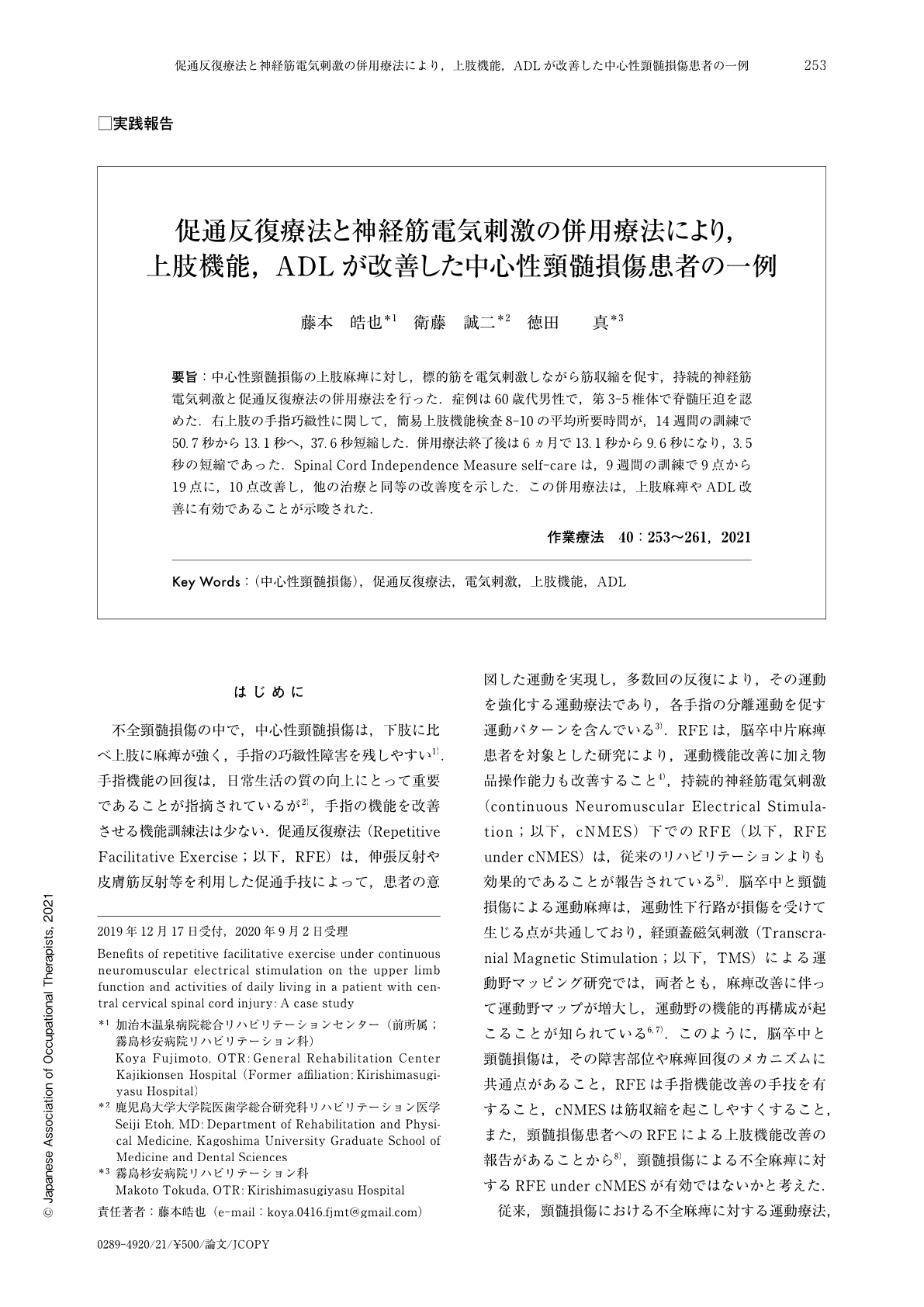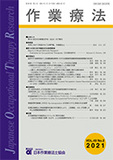Japanese
English
- 販売していません
- Abstract 文献概要
- 1ページ目 Look Inside
- 参考文献 Reference
- サイト内被引用 Cited by
要旨:中心性頸髄損傷の上肢麻痺に対し,標的筋を電気刺激しながら筋収縮を促す,持続的神経筋電気刺激と促通反復療法の併用療法を行った.症例は60歳代男性で,第3-5椎体で脊髄圧迫を認めた.右上肢の手指巧緻性に関して,簡易上肢機能検査8-10の平均所要時間が,14週間の訓練で50.7秒から13.1秒へ,37.6秒短縮した.併用療法終了後は6ヵ月で13.1秒から9.6秒になり,3.5秒の短縮であった.Spinal Cord Independence Measure self-careは,9週間の訓練で9点から19点に,10点改善し,他の治療と同等の改善度を示した.この併用療法は,上肢麻痺やADL改善に有効であることが示唆された.
A 60-year-old man with central cervical spinal cord injury (C3-5) with partial quadriplegia underwent repetitive facilitative exercise under continuous neuromuscular electrical stimulation (RFE under cNMES). RFE induced voluntary contraction of the target muscle stimulated by cNMES. The time required to perform tests 8-10 of the Simple Test for Evaluating hand Function, which requires finger dexterity, decreased from 50.7 sec to 13.1 sec (decrease of 37.6 sec) over 14 weeks of RFE under cNMES, and decreased further, from 13.1 sec to 9.6 sec (decrease of 3.5 sec) at 6 months after the end of RFE under cNMES. The score for self-care in the Spinal Cord Independence Measure improved from 9 to 19 points (increase of 10 points) during 9 weeks of RFE under cNMES. This increase was nearly identical to the gains achieved with other treatments in previous reports. RFE under cNMES may be effective for improving upper limb function and activities of daily living in patients with central cervical spinal cord injury. Future studies with a large number of participants will be needed to clarify the efficacy of RFE under cNMES.

Copyright © 2021, Japanese Association of Occupational Therapists. All rights reserved.


